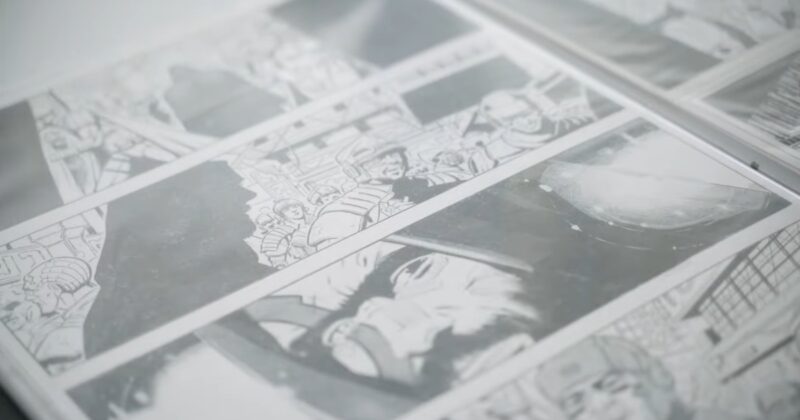Since comic books came to be in the early 20th century, they have captivated audiences, evolving into an immersive form of storytelling. In our digital age, it’s become remarkably easy to turn creative visions into printed works of art.
For those of you dreaming of creating your comic book, a crucial part of the journey is bringing your story from the digital realm to the tangible world of print. When it comes to high-quality printing services, I highly recommend checking out printingcenterusa.com.
Today, we would like to provide you with a couple of steps you should consult when creating a comic book.
Conceptualization and Pre-writing
Your journey into comic book creation begins at the pre-writing stage, a realm where your creativity knows no bounds. Here, you dive into brainstorming sessions, flesh out your characters, and start shaping your story’s backbone.
In this initial phase, let the comic book history wash over you. Think back to the 1930s Golden Age, a time when iconic superheroes like Batman and Superman first leaped off the pages and into the hearts of readers.
Ponder on the evolution of these timeless characters, especially during the transformative Silver Age in the 1960s and 1970s, which heralded the rise of the Marvel universe. Drawing inspiration from these eras can spark ideas for your characters and plots.
Don’t limit your exploration to just the American comic scene. Delve into the diverse world of international comics, like the intricate narratives of Japanese manga or the artistic flair of French bande dessinée. These global influences can bring a unique flavor to your comic, both in storytelling and visual style.
Story Development

The heart of any comic book is its story. This is where you transform your initial ideas into a structured narrative. A well-developed story is essential for guiding the visual elements of your comic. Start by fleshing out your setting, characters, and plot. Each character should have distinct personalities, motivations, and challenges, contributing to a rich, believable world.
Consider the lessons learned from the Golden and Silver Ages of comics. These eras were defined by complex characters and engaging narratives that went beyond simple good-versus-evil dichotomies. Use this inspiration to create a plot that follows a natural arc, with a clear beginning, rising action, conflict, and resolution.
As you write, think about how it will translate into sequential art. How will the dialogue drive the action? How will the narration enhance the imagery? Your script should be detailed, including descriptions of scenes and panel layouts, to provide a clear guide for the illustration phase.
Design and Artwork
The design and artwork phase is where your story begins to visually take shape. Start by creating detailed sketches of your characters. Consider how their appearances reflect their personalities and backstories.
For instance, a superhero character inspired by the Golden Age might have a more traditional, muscular appearance, while a modern anti-hero could have a grittier, more realistic look. Storyboarding is your next critical step.
This involves creating rough sketches of each page, and planning out how the story will unfold visually. Think about the layout of each panel, how they flow together, and how they’ll convey the story’s pacing and mood.
Remember, the arrangement of panels and the use of space can significantly impact how readers experience your story.
Illustration Process
The illustration process is where your comic truly comes to life. Begin with your initial drawings, focusing on getting the basic shapes and composition right. Whether you’re working on paper or digitally, this stage is about laying the groundwork for your final artwork.
Next, move on to inking and detailing. This is where you add depth, texture, and shading to your drawings. Think about how light and shadow will play across the scenes, how textures can convey mood, and how each element fits into the overall composition of the panel.
Coloring is a crucial step that can dramatically affect the feel of your comic. Choose a color scheme that reflects the tone of your story – vibrant colors for high-energy action scenes, or muted tones for more somber moments. Consistency is key; make sure to use the same colors for recurring elements throughout your comic.
Text and Dialogue

Text and dialogue bring another layer of depth to your comic. The lettering style you choose should complement the art and feel of the story. Whether you opt for hand lettering or digital fonts, ensure that your text is legible and fits well within the panels.
Balancing text and imagery is crucial. Too much text can overwhelm the visuals, while too little can leave your story feeling underdeveloped. Dialogue should feel natural and help to reveal character and advance the plot. Narration and captions can provide context and background information, enhancing the reader’s understanding of your world.
Finalizing the Comic
Finalizing your comic involves refining the layout and composition of each page. Ensure that each panel flows smoothly into the next and that the overall layout is easy to follow. This is also the time to finalize any last-minute adjustments to the artwork and text.
Your comic’s cover is a critical element, as it’s often the first thing a reader will see. It should be eye-catching and representative of the story inside. Think about how the cover can convey the essence of your comic, whether through a dramatic scene, a portrait of the main character, or a symbolic image.
Publishing and Distribution
Once your comic is complete, it’s time to think about publishing and distribution. If you’re planning a print version, consider the format and size that will best showcase your work. For digital distribution, look into online platforms where you can upload your comic for readers to access.
Self-publishing offers a great deal of creative control and can be a rewarding way to share your work with the world. Utilize social media and comic book forums to promote your comic and build an audience. You might also consider attending comic conventions or local events to showcase your work.
The Bottom Line

Now, that we have gone through all the most important steps to creating the comic book, you have a complete insight into how it should be done. We are certain you will find this insight useful.

